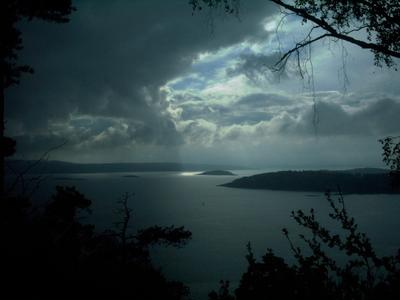There was a minor kerfuffle in recent days over claims by Tim Flannery (author of “The Weather Makers”) that new information from the upcoming IPCC synthesis report will show that we have reached 455 ppmv CO2_equivalent 10 years ahead of schedule, with predictable implications. This is confused and incorrect, but the definitions of CO2_e, why one would use it and what the relevant level is, are all highly uncertain in many peoples’ minds. So here is a quick rundown.
Definition: The CO2_equivalent level is the amount of CO2 that would be required to give the same global mean radiative forcing as the sum of a basket of other forcings. This is a way to include the effects of CH4 and N2O etc. in a simple way, particularly for people doing future impacts or cost-benefit analysis. The equivalent amount is calculated using the IPCC formula for CO2 forcing:
Total Forcing = 5.35 log(CO2_e/CO2_orig)
where CO2_orig is the 1750 concentration (278 ppmv).
Usage: There are two main ways it is used. Firstly, it is often used to group together all the forcings from the Kyoto greenhouse gases (CO2, CH4, N2O and CFCs), and secondly to group together all forcings (including ozone, sulphate aerosols, black carbon etc.). The first is simply a convenience, but the second is what matters to the planet. Many stabilisation scenarios, such as are being discussed in UNFCCC negotiations are based on stabilising total CO2_e at 450, 550 or 750 ppmv.
Magnitude The values of CO2_e (Kyoto) and CO2_e (Total) can be calculated from Figure 2.21 and Table 2.12 in the IPCC WG1 Chapter 2. The forcing for CO2, CH4 (including indirect effects), N2O and CFCs is 1.66+0.48+0.07+0.16+0.34=2.71 W/m2 (with around 0.3 W/m2 uncertainty). Using the formula above, that gives CO2_e (Kyoto) = 460 ppmv. However, including all the forcings (some of which are negative), you get a net forcing of around 1.6 W/m2, and a CO2_e (Total) of 375 ppmv with quite a wide error bar. This is, coincidently, close to the actual CO2 level.
Implications The important number is CO2_e (Total) which is around 375 ppmv. Stabilisation scenarios of 450 ppmv or 550 ppmv are therefore still within reach. Claims that we have passed the first target are simply incorrect, however, that is not to say they are easily achievable. It is even more of a stretch to state that we have all of a sudden gone past the ‘dangerous’ level. It is still not clear what that level is, but if you take a conventional 450 ppmv CO2_e value (which will lead to a net equilibrium warming of ~ 2 deg C above pre-industrial levels), we are still a number of years from that, and we have (probably) not yet committed ourselves to reaching it.
Finally, the IPCC synthesis report is simply a concise summary of the three separate reports that have already come out. It therefore can’t be significantly different from what is already available. But this is another example where people are quoting from draft reports that they have neither properly read nor understood and for which better informed opinion is not immediately available. I wish journalists and editors would resist the temptation to jump on leaks like this (though I know it’s hard). The situation is confusing enough without adding to it unintentionally.
 Last week, a Norwegian official-looking – and in my view – climatesceptic
Last week, a Norwegian official-looking – and in my view – climatesceptic